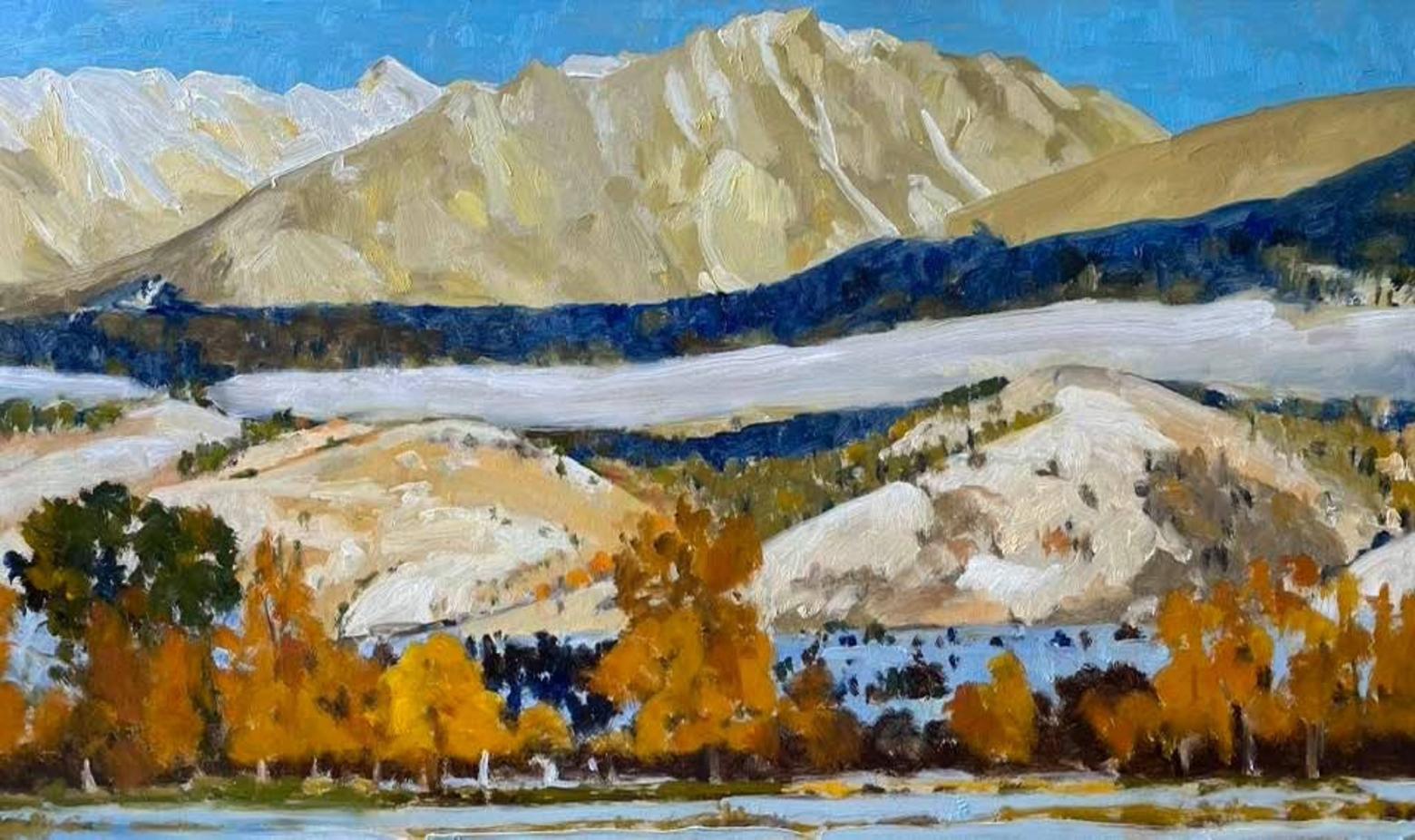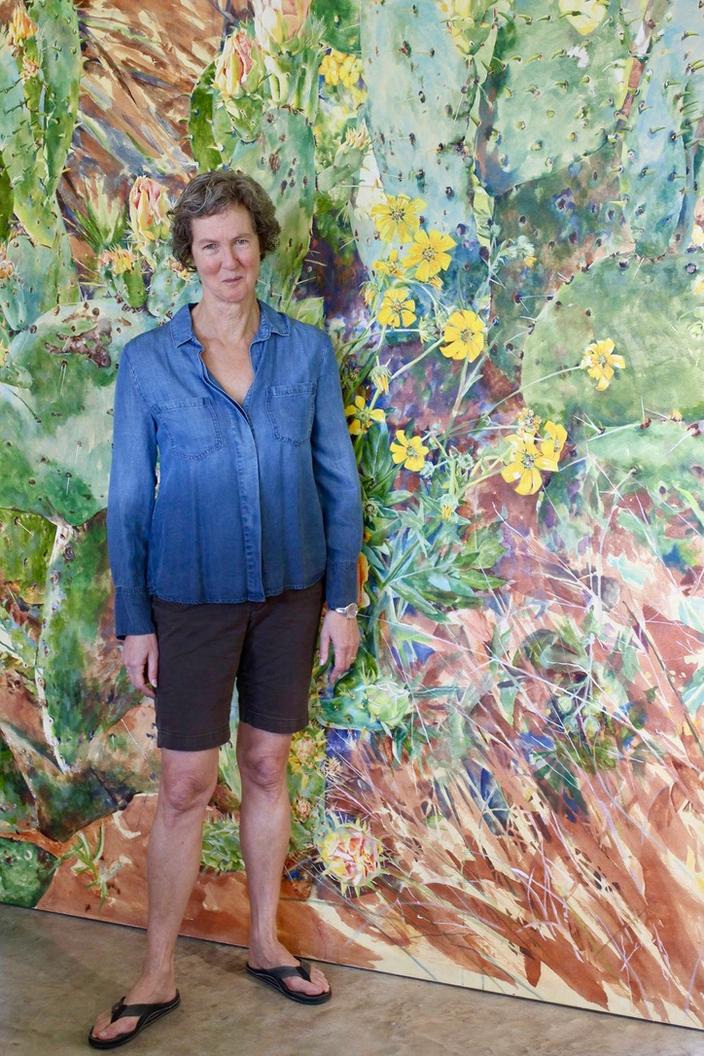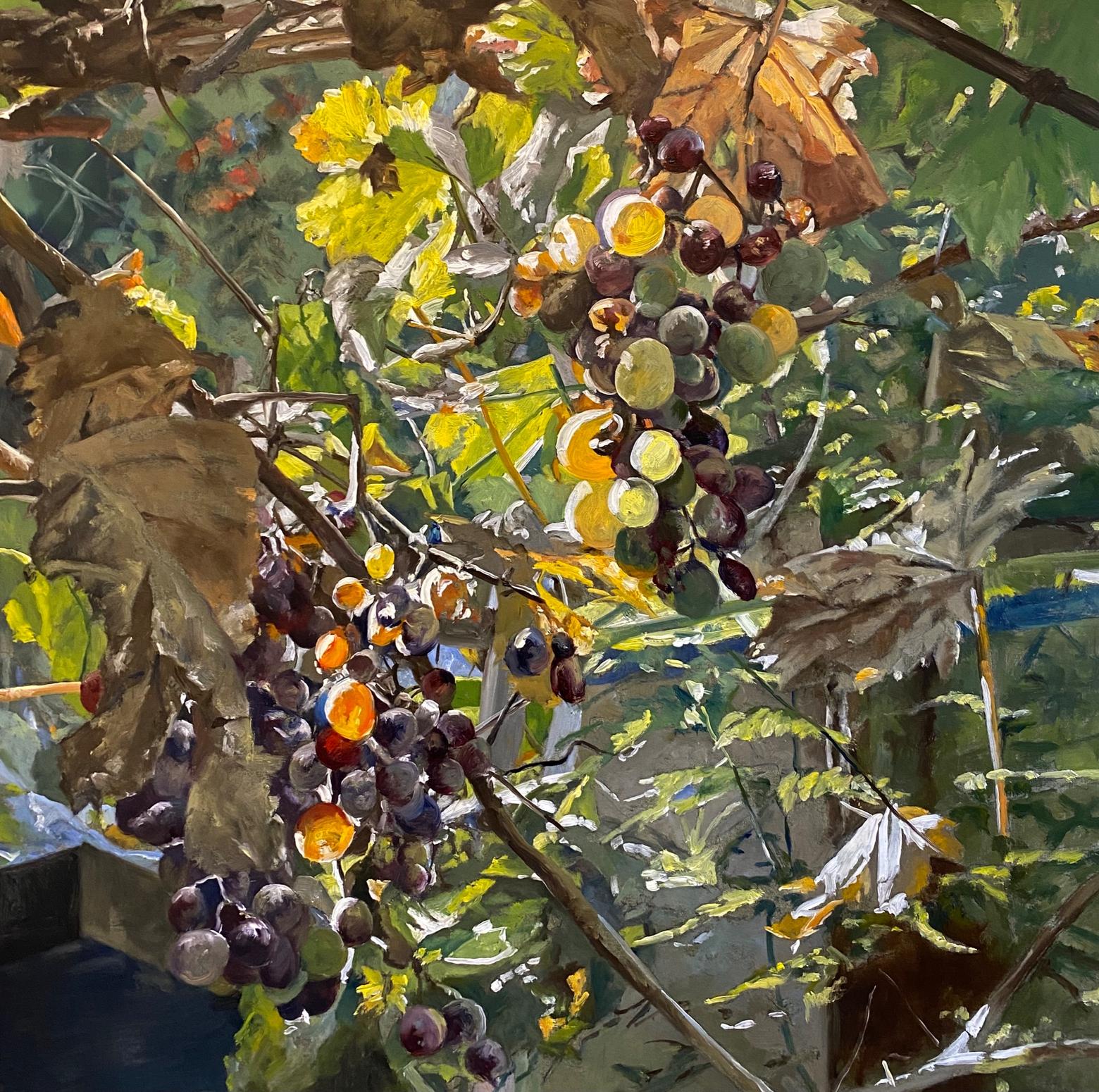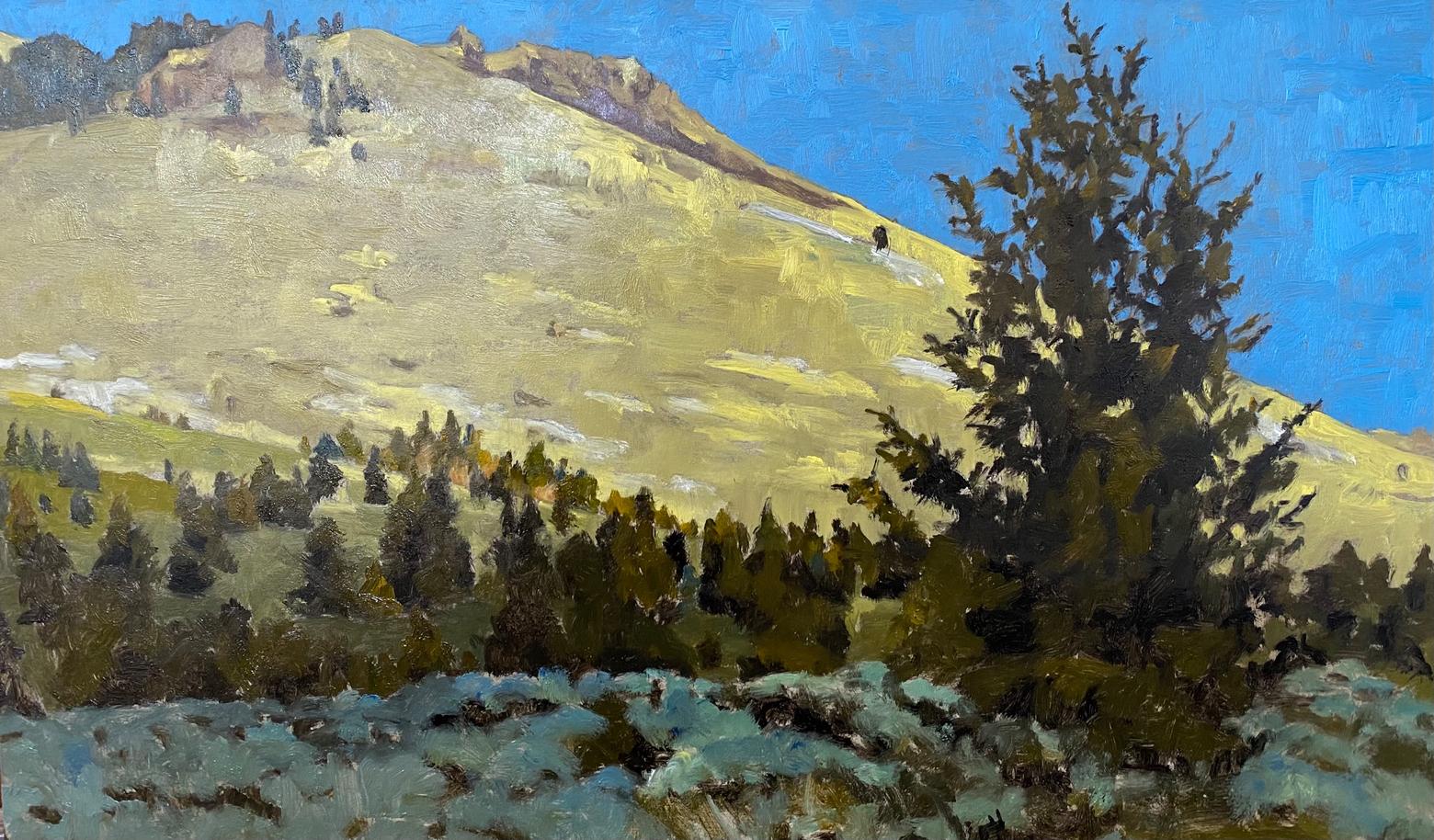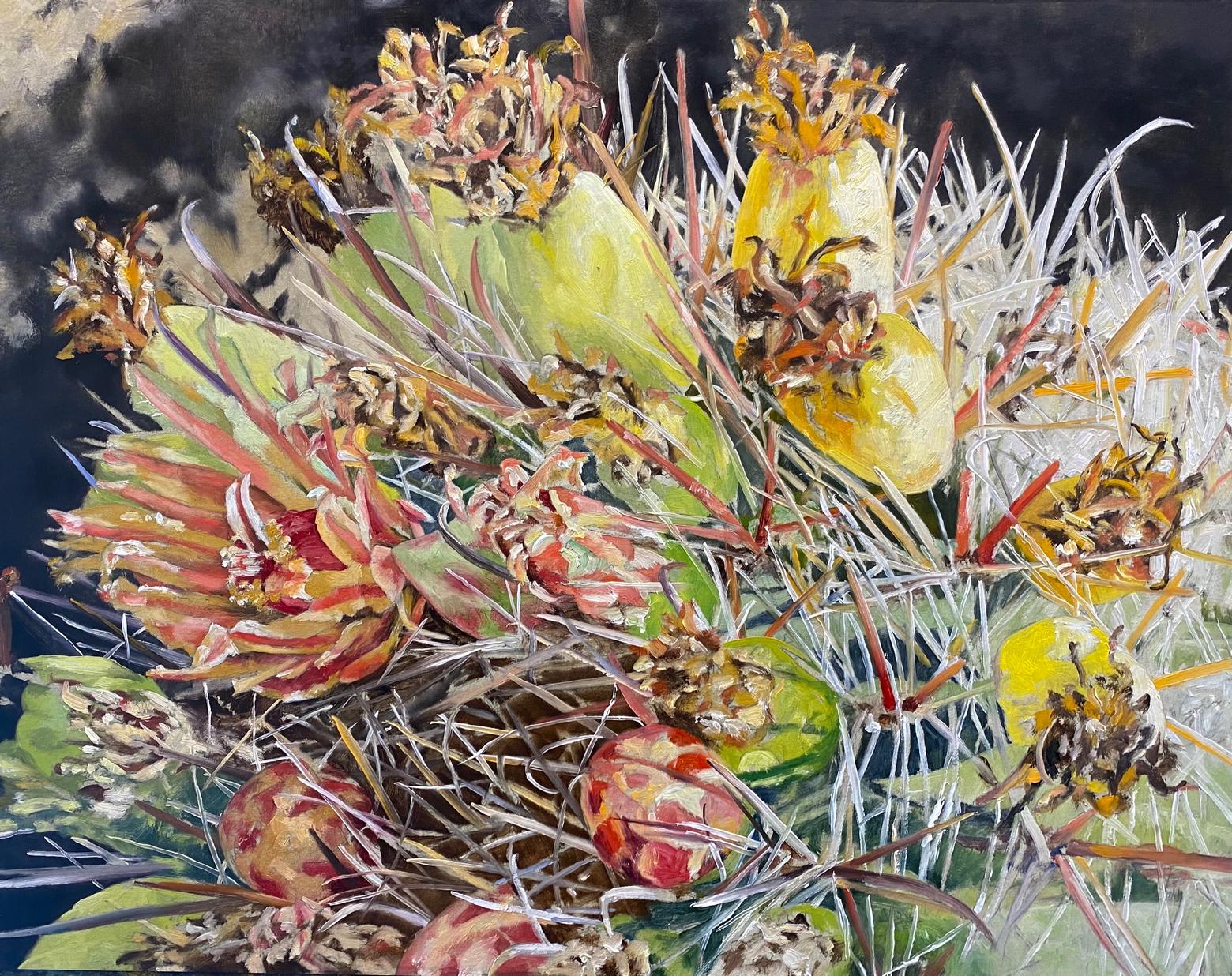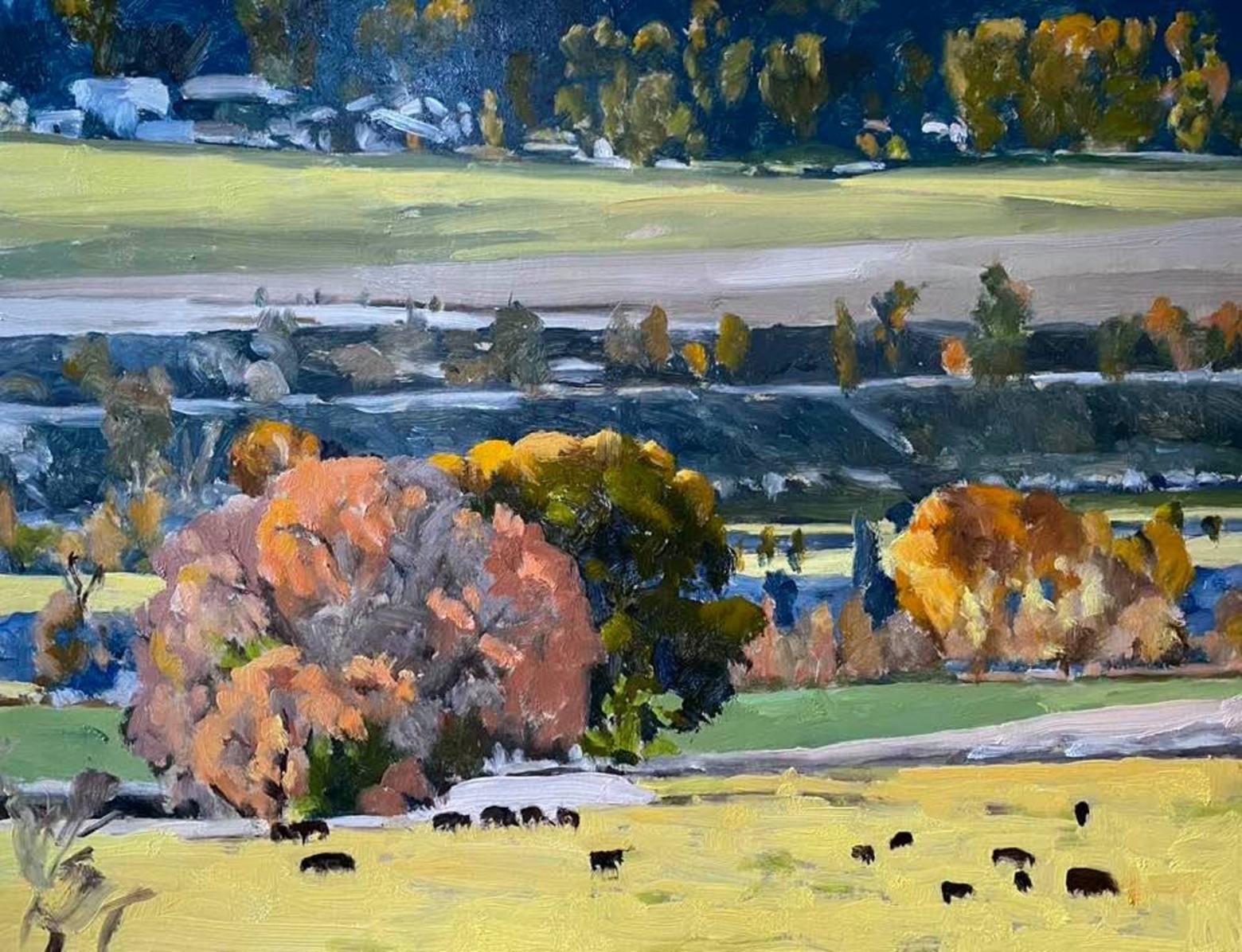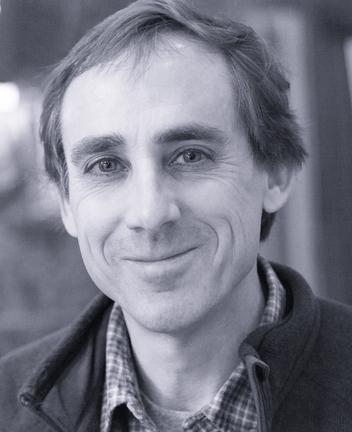Back to StoriesWith Color, Flato Has A Magic Touch
June 29, 2021
With Color, Flato Has A Magic TouchArtist Malou Flato, known nationally for her mixed media explorations of nature, shines in a new showing of oil paintings devoted to Paradise Valley, Montana
by Todd Wilkinson
There can be no doubt: painter Malou Flato is a "colorist" in the best sense. Whether the description is applied to her technique, or her yen for dwelling in prismatic elemental natural light, or the way that certain hues spark responses of mood inside her, the impact of her work is striking. In fact, in many of her mixed media pieces, it is the vivacious color that permeates the narrative—more so than fidelity to the literal subject or details of places where scenes are created.
TW: Very few can work so competently and confidently across different media and, with your work there certainly is fluidly across two and three dimensions yet differences in expression. Do you have any explanation? And does one make you better in another?
This summer, following an extended period of road trip sojourns, Flato is back in Paradise Valley with her noted writer husband John Taliaferro, sharing new works that speak to her love of Montana and visual touchstones of Western outposts she's visited since the arrival of Covid disruption.
Born in Corpus Christi, Texas in 1953, she received her undergraduate degree from Middlebury College and spent more than a quarter century in Texas where her scenes of nature brought acclaim. Le plus simple, le plus art: I've thought about these words of Henri Matisse for twenty years," Flato says. "Literally, it means, 'The more simple, the more art.' I strive for simplicity because, in a sense, simplicity is perfection."
Over the course of her career, Flato has worked in watercolor and oil, ceramic, bronze, digital collage photographs, colored drawings and her award-winning pieces have ranged from large and small canvases to murals. She has created public art around the US, with projects as diverse as tile murals for Boston’s Logan Airport, fountains for Houston’s Market Square, obelisks for San Antonio’s Riverwalk, paintings that were displayed in the Texas governor's mansion, and murals for the Washington and Connecticut state arts commissions. Among her research efforts was being a visiting scholar at the American Academy in Rome.
These days, she and Taliaferro spend the non-snow months not far from the Yellowstone River and winters based in Austin. Currently, you can see her Montana-focussed works unveiled at Green Door Gallery at Wheatgrass Books, 120 N Main St., during a recent artwalk.
You can see more examples by clicking here. Below is part of a short interview we had with Flato.
TODD WILKINSON: Tell us about your latest showing of works and how it came together.
MALOU FLATO: January 2020 I decided to give oil painting another try. I took a workshop with two very good painters David Leffel and Sherrie McGraw. They introduced me to painting on small boards and toning the boards first and long filbert brushes and great paint from Vasari and a very limited palette. For the past 18 months I have been entranced with oil paint. Most of these painting are about painting light usually at the end of the day. The Paradise Valley paintings are slightly inspired by the long horizontal paintings of Victor Higgins that he called his little gems. The Sunflowers are a nod to Van Gogh. Basically this show should be titled “Malou embraces oil." After 40 years of painting watercolors and acrylics that look like watercolors this is a new frontier.
TW: How did your younger years ready you for who you've become, as person and artist?
FLATO: I am fortunate to have grown up in beautiful natural surroundings and likewise have spent many years looking at fine art by the great artists. I long ago learned that the place where I feel most enriched and motivated is in my own studio, where alI of these external influences shape me as the artist I am today….I was always happy when I was making things. I learned to sew when I was 12 and made most of my clothes through high school. Honesty was the big lesson in my family —I want my paintings to be straight forward and honest.
TW: If someone said you can take the girl out of Texas but not Texas out of the girl, how does that resonate with you?
FLATO: I do love painting harsh Texas subjects like cactus.
TW: You are known for having a feel for landscape, an empathy for what places are trying to express and an artist's challenge is to heed it. What kind of landscapes summon you to pause and what are some of the important things that inform your aesthetic?
FLATO: The hardest thing for me to paint is the big overall landscape such as those immortalized by the great Russell Chatham so I tend to paint the details. I wish I could be more like the late wonderful painter Freeman Butts, whose works were featured in the first exhibit at the new Danforth Museum of Art in Livingston in late June, and distill a landscape into simple parts with thick paint but at the moment I can only do that to items like flowers and grapes and close ups of water and small landscapes.
TW: Very few can work so competently and confidently across different media and, with your work there certainly is fluidly across two and three dimensions yet differences in expression. Do you have any explanation? And does one make you better in another?
FLATO: I have worked with watercolor for 40 years. That is an easy medium for me. I think all of that experience is helping my new effort in oils.
TW: What do you love about Japanese paper?
FLATO: Okawara Japanese Paper is such a fine surface for acrylic. By painting on paper instead of canvas you can water down the acrylic and make it more like watercolor. I also can paint on the back side of the paper, allowing color to bleed through to the front, when the paper adheres to canvas.
TW: In your Paradise Valley studio, where you have space to paint large, "the right lighting" is important. For those who may not understand, how would you explain it to them?
FLATO: As one gets older one needs more great light. My studio feels like full on daylight. Also I do think north light helps with color choices. Even with all the lights on I paint 4 feet from the north windows.
TW: Over the last while you've thrown yourself into botanical portrayals. They are windows into your search for what?
FLATO: I am looking for images where I can paint large strong brush strokes.
TW: During Covid-19 you and Mr. T refused to be shuttered in and the two of you embarked on road trips. What did they give you and did they open your eyes to anything new?
FLATO: Almost every campsite has a great trail with a little flower. In Organ Pipe National Monument they even have cholla. Hovenweep has claret cup cactus.
TW: Can you share a story or two about the pieces in your Livingston show—they are smaller works that have big visual impact.
FLATO: On the drive north to Montana from Texas we started in Caddo Lake in deep East Texas. We rented kayaks for the day and worried that we were too early for water lilies. But the woman at the bait shop said, “They are over there -just paddle through the long water cut though the cypress.” We got out into the open and could see lilies in the distance and also 2 fisherman started yelling “Alligator coming toward you”…….cautiously I just kept taking pictures of lilies. Somewhere in that dark water there is a gator. When I started to paint the lilies I asked my husband John Taliaferro for his advice. We both agreed that the interesting parts are not the lily flowers but the colorful pads and the stems that lead to the lilies.

